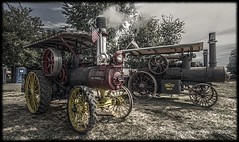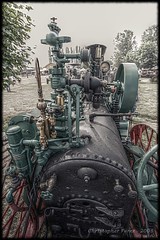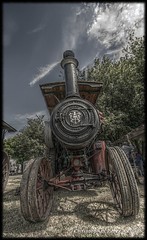In this society the easy measure of success is financial. If you are selling photographs, then you are 1) good and 2) successful.

I have come to view success a little differently. In short, success to me will be if someone a few hundred years from now picks up a print I made and appreciates it. The only drawback with this definition is that I won't be there to witness the event.
There may be, however, a few key indicators to potential future appreciation.
My wife and I went to the Charles Russell Museum in Great Falls, Montana recently. While waiting for my wife I spied an interesting painting. I stood before it and considered what it was that made it so interesting to me.
The first thing I noticed with the sense of "depth" the image had. The second thing I noticed was how it made me feel. There were trees in the foreground and a high snow-capped mountain behind. Everything in the image was carefully arranged and composed. Light spilled from the high right throughout the scene. Everything was as it "should" be. Classic traditional art.

I continued to look at it with deeper more careful observation. As I did this, I noticed that the bark on the trees that were in deep shadow contained beautiful "correctly" contrasted details. It was almost as if I could reach out and touch the bark and feel the coolness of the tree's shade. The dried grass field in the foreground was clearly and cleanly articulated. The straw colors reminded me of the dry late summer heat. Looking up onto the mountain, snow fields were beautifully painted, with just a hint of blue, just like glaciers I saw throughout the Rockies. It seemed there was a small bit of haze between the foreground features and the mountain, just like smoke or humidity found in late summer. Finally, I considered the cloud formations. They were delicately rendered, exactly as I remembered similar cloud groups I saw in the Grand Tetons.

Taken in total, the painting was a near perfect articulation of scenes I had grown up with. From a photographers perspective, this scene was precisely as a human eye and brain would see and experience a view like this in real life.
From a photographer's perspective I knew instantly how photographs fail to recreate similar scenes. Had a camera been used to make the image the shadows would have been dark and muddied. The snow-capped peaks would be been too bright and over-exposed to properly capture the hint of blue. The haze might have been removed or reduced with the use of a UV filter. The colors would have been "punched up" through the use of Fuji Velvia or a similar function on a digital camera. A photographer would have had to work incredibly hard to come close the revealing what the painting did. A photograph would have been "something else".
As a culture and society that has looked at photographs for over 150 years, we have become "educated" as to the hard stern limits of photographic technologies. We learned from the great English photographers who captured the light of India and from the wonderful French photographers who worked the tourist post card trade in Egypt. We learned from Life magazine and National Geographic. We learned from the Great Saint Ansel Adams. We have learned what is and what is not a photograph.

So, what happens when image making technologies evolve and change? What happens when an image capture device is able to retain the hint of blue in the high mountain ice field? What happens when the "micro-contrast" of deeply shadowed tree bark is not only retained, but nicely enhanced? What happens when a photograph looks more like what the eye perceives than not? Is it still a photograph? Or, just as importantly, is it art?
William Mortensen had a lot to say on the topic of what comprises long lasting art image making. One of the things he noted is that careful composition is essential. He also placed strong emphasis on the quality of light deployed in the making of an image. Mortensen talked about the differences between "notan" style and "chiaroscuro" style lighting. The most descriptive guidance he left us are his Camera Craft published books. From 1937 and into the 1950's, William Mortensen wrote about art, image structure, image control, and, where appropriate, how to position, cloth, and light a human subject.
It seems that certain images have stood the test of time. Whether viewing the ancesteral cave paintings in France, or the incredible tile work from Byzantium, or the awesome paintings of the pre-Rennaisance Italy, much of the work is "visibly" and "knowingly" considered by many to be true "art". That is to say, images created several thousand years ago still hold appeal to viewers all these years later.

In current times I see that some photographic artists are stuggling with what has become of their craft. In one dimension there is the emergance of digital creation tools. In another dimension there is the now wide open possibilities that new tools and processes allow image makers. In yet another dimension is the question of how blurred the lines between "truth" and "manipulation" has become. Simply put, some people are asking questions about photography as a stand alone art form in an age where anything and everything can be created, manipulated, and managed from concept through to execution.
These are tough times for photo-traditionalists. From my own observations, it has appeared that photo-"insiders" long understood how to "look" at a work and find it "acceptable" and "pleasing" to them. I also observed how viewers unfamiliar with photographic techniques and processes can often times become befuddled by what they are looking at. It seems as if they failed to "see" what photo-"insiders" "see".
Things change.
Its interesting to watch as other struggle and strive to find a place in this rapidly evolving growing field of expression. In my own work, I have come to recognize the power of a well executed, properly lit, neatly processed image. It took the adoption of new tools and techniques to realize this vision. I couldn't be more excited by the possibilities.

No comments:
Post a Comment